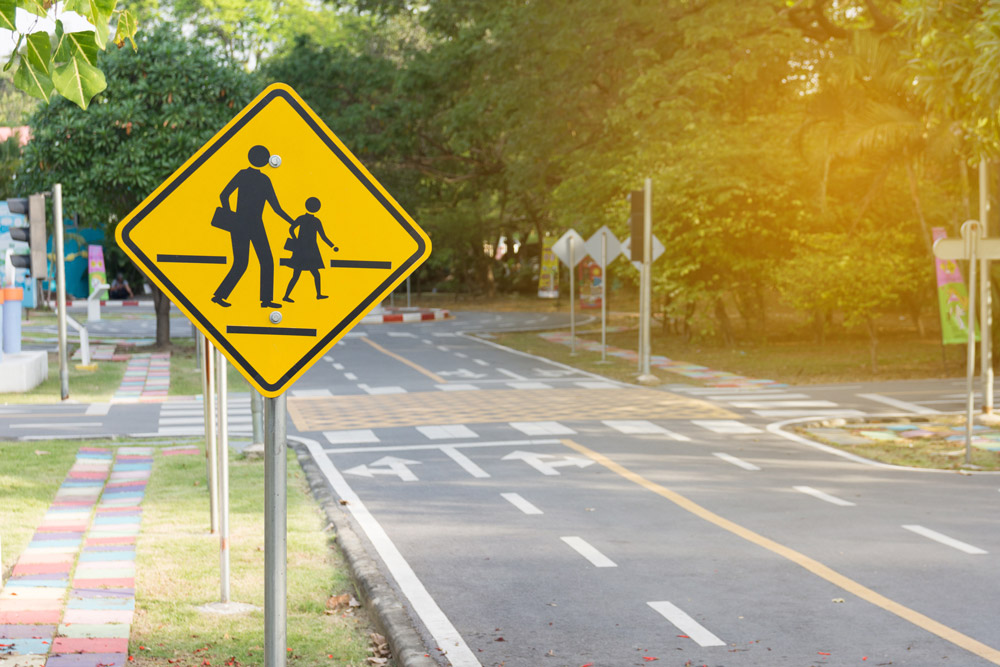
Licensed to Decipher
As much as we anticipated all that we would experience once we finally got our driver’s license as teenagers, we likely didn’t expect that we would essentially be learning a whole other language than the one that we already know. But driving a car forces us to not only allow this whole other set of words and symbols into our lives but expects us to speak it fluently as well.
This language is hardly spoken in words; instead, it is made up by graphic design artists who have created our signage, with all its imagery and colors, to communicate essential information to every driver who rolls on by.
To ignore or otherwise remain ignorant as to the meaning of these signs is to tempt fate and, more often than not, land your car in the car repair shop. Let’s take a quick look at some of the most important phrases and symbols in this language so that we can remain as safe as we possibly can.
The Communicators
Before we know what is being said, it’s important to know from whence the messages are coming. On the road, there are all sorts of things are people attempting to communicate with you; many drivers education instructors teach that because there are so many visual stimuli bombarding the car at any given time, the driver must always be cycling their eyes from between their mirrors and must be always identifying ways in which something could go wrong in front of them and how they’re going to react to it.
Some of the most common communicators on the road are:
- Traffic signs
- Traffic lights
- Construction obstacles
- Your dashboard warning signals
- Other drivers
Through the medium of flashing lights and simple graphics, drivers are in constant communication with each other and the road around them. The best thing we can do in order to avoid any untimely car repairs is to brush up our fluency in the language of driving.
Traffic Signs
While we could spend all day going over the meaning of the various warning lights that appear inside your car (particularly on the dashboard), let’s take a look at the elements outside the car, out on the road, that are attempting to communicate with you. The overwhelming majority of these communicators are traffic signs, which come in many different styles for many different reasons.
Regulatory Signs
Because these signs are made to indicate applicable laws, the color pallet is bright red and white. Infractions against these signs carry some of the biggest penalties. They include:
- Stop signs
- Yield signs
- Speed limits
- Do Not Enter
- No Turn signs
Guide Signs
These blue and white signs are often seen on freeways or other roads that are used mainly to direct the drivers on where to go. If you’re lost or following directions, you are likely looking for these signs. They include:
- Exit signs
- Mile signs
- Interstate numbers
- Major thoroughfare indicators
Services and Recreation
Whereas you might see recreation signs on freeways as well (usually to indicate what lies just off the exit), most of these service signs are found up in the mountains or around state parks. They are blue and brown and usually include:
- Camping signs
- Car repair shop
- Handicapped accessible areas
- Gas stations
- Restaurants
- Hiking trails
Warning Signs
Yellow warning signs are usually found on roads that run along mountains, bodies of water, or fault lines. They indicate things that the driver should watch out for, and are posted in areas where freak accidents might occur. They include:
- Merging lanes
- Side roads
- Intersections
- Sharp curves
- Winding roads
- Falling rocks
- Children at play
- Animals
Construction Signs
A staple of any construction zone, these signs let drivers know how best to navigate all the changes that are happening to the road. It is important to remain aware of these signs because they not only guard against life-threatening situations but also carry a big fine if ignored.
They are orange and include:
- Flagger ahead
- Detour
- Road closed
- Workers ahead
- Slow traffic
The language of driving is an important part of the whole experience of operating a vehicle. If you are worried that you may have injured your car due to a misinterpretation of any of these signs, feel free to bring your vehicle to our Sandy car repair center today.
Related Posts
As an EV owner, understanding your vehicle's battery is critical. From its capacity to its lifespan, and everything in between, we'll guide you through what you need to know to optimize your EV experience. So buckle up and get ready - we're about to shed some light on the electrifying world of EV batteries. What [...]
If your car is running hot, it can be a sign that something’s not right with your engine. Fortunately, diagnosing the cause of an overheating engine isn't too difficult if you know what to look for and how to address it. Keep reading if you want to learn the most common issues that occur when [...]
Your vehicle's exhaust system serves a critical role in managing the byproducts of the combustion process and ensuring optimal engine performance. The appearance of colored smoke from the exhaust pipe, either when stationary or accelerating, can provide valuable clues to underlying mechanical issues. What is a car exhaust? A car exhaust is a system [...]





